HBSE 8th Class Social Science Solutions History Chapter 2 From Trade to Territory: The Company Establishes Power
Haryana State Board HBSE 8th Class Social Science Solutions History Chapter 2 From Trade to Territory: The Company Establishes Power Textbook Exercise Questions and Answers.
Haryana Board 8th Class Social Science Solutions History Chapter 2 From Trade to Territory: The Company Establishes Power
HBSE 8th Class History From Trade to Territory: The Company Establishes Power Textbook Questions and Answers
Question 1.
Match the following:
| (i) Diwani | (a) Tipu Sultan |
| (ii) “Tiger of Mysore” | (b) Right to collect land revenue |
| (iii) Faujdari adalat | (c) Sepoy |
| (iv) Rani Chinnamma | (d) Criminal court |
| (v) Sipahi | (e) Led an anti-British movement in Kitoor |
Answer:
(i) (b)
(ii) (a)
(iii) (d)
(iv) (e)
(v) (c)
Question 2.
Fill in the blanks :
(a) The British conquest of Bengal began with the Battle of _________.
(b) Haidar Mi and Tipu Sultan were the rulers of _________.
(c) Dalhoiisie implemented the Doctrine of _________.
(d) Maratha kingdoms were located mainly in the _________.
Answer:
(a) Piassey
(b) Mysore
(c) Lapse
(d) north
![]()
Question 3.
State whether true or false:
(a) The Mughal empire became stronger in the eighteenth century.
(b) The English East India Company was the only European Company that traded with India.
(c) Maharaja Ranjit Singh was the ruler of Punjab.
(d) The British did not introduce administrative changes in the territories they conquered.
Answer:
(a) False
(b) False
(c) True
(d) False
LETS DISCUSS
Question 4.
What attracted European trading companies to India?
Answer:
There was a great demand of Indian goods in European countries such as cotton and silk. Pepper, cloves, cardamom and cinnamon too were in great demand. These dungs could be purchased at low priees in India and could be sold at very high prices. Hence European trading companies came to India to gain profits.
Question 5.
What were the areas of conflict between the Nawabs of Bengal and the East India Company?
Answer:
Following were the areas of conflict between the Bengal nawabs and the East India Company:
1. (i) The nawabs refused to grant concessions to die Company.
(ii) They demanded large tributes for the Company’s right to trade.
(iii) They denied Company the right for mint coins stopped it from extending its fortification.
(iv) The nawabs accused the Company of not paying taxes and writing disrespectful letters.
2. On the other hand, the Company also accused the nawabs in the following ways:
(i) The local officials of the Nawab were 1 ruining the trade of the Company by making unjust demands.
(ii) The Company had to pay excessive duties.
(iii) The Company is not permitted to enlarge settlement and rebuild its forts.
Question 6.
How did the assumption of Diwani benefit the East India Company?
Answer:
The assumption of Diwani benefited the East India Company in the following ways:
- The Diwani allowed the Company to use vast revenue resources of Bengal.
- The outflow of gold and silver which the Company imported to buy goods in India was stopped.
- The revenue from Bengal now could be used to purchase cotton and silk textiles in India, maintain
- Company troops and meet the cost of building the Company fort and offices at Calcutta.
Question 7.
Explain the system of “subsidiary alliance”.
Answer:
The following were the features of . system of Subsidiary Alliance given by Lord Wellesley:
(a) The Indian rulers accepting the Subsidiary Alliance would neither enter into alliance with any other power, nor would they declare war against any power without the permission of English.
(b) The Indian rulers accepting this system were to agree to the stationing of the British contingent force for whose maintenance they would pay a subsidy.
(c) He would allow a British resident to stay in his state.
(d) He would not employ any Europeans other than the English and if there was already any, he would dismiss them.
(e) In return for acknowledging the British company as the paramount power, the company undertook to protect him from the external dangers and internal disorders.
![]()
Question 8.
In what way was the administration of the Company different from that of Indian rulers?
Answer:
(i) The British territories were broadly divided into administrative units called Presidencies. There were three Presidencies-Bengal, Madras and Bombay. The supreme head of the administration was the Governor- General.
(ii) From 1773, each district was to have two courts – a criminal court (faujdari adalat) and a civil court (diwani adalat). Muslims and Hindu Pandits interpreted Indian laws for the European district collectors who presided over civil courts. The criminal courts were still under a qazi and mufti but under the supervision of the collectors.
(iii) In 1775, eleven Pandits were asked to compile a digest of Hindu laws.
(iv) By 1778, a code of Muslim laws also compiled for the benefit of European judges.
(v) Under the Regulating Act of 1773, a new Supreme Cotut was established. A court of appeal—the Sadar Nizamat Adalat was also set-up at Calcutta.
(vi) The main role of the collector in Indian district was to collect revenue and taxes and maintain law mid order in Ms district with the help of judges, police officers and darogas.
Question 9.
Describe the changes that occurred in the composition of the Company’s army.
Answer:
The following were the changes that occurred in the composition of the Company’s army:
(i) The English Company though recruited Indian soldiers in the army but they were never allowed to acquire any higher post.
(ii) The cavalry dominated the army and the Mughafstate did not feel the need to have a large professionally trained infantry. The English Company’s soldiers were however armed with muskets and match* locks.
(iii) The infantry regiments became more important under the British Company.
(iv) The soldiers of the Company were subjected to European style of training.
LETS DO
Question 10.
After the British conquest of Bengal, Calcutta grew from a small village to a big city, find out about toe culture, architecture and toe life of Europeansand Indians of toe city during toe colonial period.
Answer:
The main features of Calcutta city during the colonial period were os follows:
(i) Calcutta from 1750 to 1805 s The work of planning of Calcutta wot carried by different Governor-Generals. After toe Battle of Plassey Civil lines area wore developed.
(ii) Planning of Calcutta after Lord Wellesley. After Wellesleys departure, the work of town planning was carried on by Lottery Committee (1817) with the help of the government.
(iii) Role of Health and Town Planning of Calcutta t The threat of epidemics gave a further impetus to town planning.
(iv) Change in Attitude of Government for Hanning : Densely built up areas were seen as insanitary since they obstructed direct sunlight and circulation of air.
Question 11.
Collect pictures, stories, poems and information about any of the following-the Rani of dhansi, Mahadji Sindhia, Haidar All, Maharaja Ranjit Singh, Lord Dalheusie or any other contemporary ruler of your region.
Answer:
Do yourself.
HBSE 8th Class History From Trade to Territory: The Company Establishes Power Important Questions and Answers
Very Short Answer Type Questions
Question 1.
What is Chauto?
Answer:
It is a tax levied by the Marathas from the areas outside their domain, equal to one- fourth ofthe revenue paid to the Mughal Empire.
Question 2.
Why could Delhi no longer function as an effective centre?
Answer:
Delhi could no longer function as an effective centre because powerful regional kingdoms emerged in various parts of India.
Question 3.
What was written in toe charter from toe Queen Elizabeth to toe East India Company in 1600?
Answer:
The charter from toe Queen Elizabeth to the East India Company in 1600 granted to Company the sole right to hade with the East.
![]()
Question 4.
How had the Portuguese reach toe western coast of India by toe time the first English ships sailed down toe west coast of Africa?
Answer:
The Portuguese had reached the western coast of India because the royal charter could not prevent other European powers from entering the Eastern markets.
Question 3.
When and where was toe first English factory set-up?
Answer:
The charter from toe Queen Elizabeth to the East India Company in 1600 granted to Company the sole right to trade with the East.
Question 4.
How had the Portuguese reach toe western coast of India by toe time the first English ships sailed down toe west coast of Africa?
Answer:
The Portuguese had reached the western coast of India because the royal charter could not prevent other European powers from entering the Eastern markets.
Question 5.
When and where was toe first English factory set-up?
Answer:
The first English factory was set-up on the banks of river Hugli in 1651.
Question 6.
What farman did the Company ask from the Mughal emperor Aurangzeb?
Answer:
The Company persuaded the Mughal Emperor Aurangzeb to issue a farman granting the Company the right to trade duty free.
Question 7.
What three things Sirajuddaulah ask the Company to do?
Answer:
Sirajuddaulah asked the Company to:
- stop meddling in the political affairs of his dominion
- stop fortification
- pay the revenues.
Question 8.
What was the main reason for the defeat of the Nawab Sirajuddaulah?
Answer:
The main reason for the defeat of the Nawab was that Mir Jafar, one of Sirajuddaulah’s commanders and Mir Jafar’s officers never fought the battle.
![]()
Question 9.
Name the Nawabs of Bengal who asserted their power and autonomy against the Mughals.
Answer:
- Murshid Quil Khan
- Alivardi Khan
- Sirajuddaulah.
Question 10.
Which Nawab of Bengal was defeated in the Battle of Plassey?
Answer:
Sirajuddaulah.
Question 11.
What happened after Tipu Sultan’s death?
Answer:
After Tipu Sultan’s death :
- Mysore was placed under the former ruling dynasty of the Wodeyars.
- A subsidiary alliance was imposed on the state.
Question 12.
What did the new policy of ‘paramountcy’ state?
Answer:
The new policy of “paramountcy” stated that authority of Company was paramount or supreme, hence its power was greater than that of Indian states.
Question 13.
Who was Rayanna?
Answer:
Rayanna was a poor chowkidar of Sangoli in Kitoor who revolted against the British.
Question 14.
Name the Governor-General who brought the Doctrine of Lapse.
Answer:
Lord Dalhousie.
Question 15.
Name any four Kingdoms annexed under the Doctrine of Lapse.
Answer:
- Satara
- Sambalpur
- Udaipur
- Nagpur
- Jhansi.
Question 16.
How many Presidencies were there in the British India? Name them.
Answer:
There were three Presidencies:
- Bengal
- Madras
- Bombay.
Question 17.
Who was the first Governor- General of India?
Answer:
Warren Hastings.
Question 18.
Who was the last powerful Mughal ruler?
Answer:
Aurangzeb.
Question 19.
How did the Mughal empire become weak?
Answer:
After Aurangzeb’s death, many Mughal governors began establishing their own regional kingdoms. This weakened Mughal empire.
Question 20.
When and where was the East India Company established?
Answer:
The East India Company was established in 1600, in England.
![]()
Question 21.
What did the Charter mean?
Answer:
The Charter meant that no other trading group in England could compete with the East India Company.
Question 22.
Which western power came first to India.?
Answer:
Portuguese.
Question 23.
Who discovered the sea route to India and when?
Answer:
Portuguese explorer Vasco da Gama discovered the sea route to India in 1498.
Question 24.
Through which route the British came to India?
Answer:
The British came to India through the Cape of Good Hope (South of Africa).
Question 25.
When was the Supreme Court established?
Answer:
The Supreme Court was established in 1773 under the provisions of Regulating Act.
Question 26.
Which new technology aided the Company to become a territorial colonial power?
Answer:
New steam technology.
Short Answer Type Questions
Question 1.
How was the charter issued to the East India Company by Queen Elizabeth I in 1600 advantageous for the Company?
Answer:
The charter issued by Queen Elizabeth I in 1600 was advantageous for the Company because :
- No other trading group in England could Compete with the East India Company.
- With this charter the Company could venture across the oceans, looking for new lands from which it could buy goods at cheap price, and carry them back to Europe to sell at higher prices.
Question 2.
What type of relationship existed between the trading companies through the seventeenth and eighteenth centimes?
Answer:
The relationship that existed between the trading companies was that of rivalry and harsh competition. The only way the trading companies could flourish was by eliminating the rival competitors. Trade was carried on with arms and trading posts were protected through fortification.
Question 3.
Why were the British furious with Tipu Sultan?
Answer:
The British got furious with Tipu Sultan because :
(a) In 1785, Tipu Sultan stopped the export of sandalwood, pepper and cardamom through the ports of his kingdom and disallowed local merchants from trading with Company.
(b) He also established a close relationship with the French in India and modernised his army with their help.
The British saw him as ambitious, arrogant and dangerous and become furious.
Question 4.
How did Tipu Sultan come to be known as the ‘Tiger of Mysore’?
Answer:
Once Tipu Sultan went hunting in the forest with a French friend, he came face-to-face with a tiger. His guns did not work and his dagger fell to the ground. He battled with the tiger unarmed until he managed to reach down and pick up the dagger. Finally, he was able to kill the tiger in the battle. After this he came to be known as the Tiger of Mysore’.
Question 5.
What was the new system of justice established in 1772?
Answer:
A new system of justice was established in 1772. Each district was to have two courts-a criminal court and a civil court. Muslims and Hindu Pandits interpreted Indian laws for the European district collectors who presided over civil courts. The criminal courts were still under a qazi and mufti but under the supervision of the collectors.
![]()
Question 6.
Why did the European Companies conflict with each other?
Answer:
- They were trade competitors.
- They only way the trading Companies could flourish, was by eliminating rival competitors.
- The urge to secure markets, therefore, led to fierce battles between the trading Companies.
Question 7.
How did the farman issued by Aurangzeb cause loss of revenue for Bengal?
Answer:
- Aurangzeb’s farman had granted the Company the right to trade without paying duties.
- But the Company officials who were carrying individual trade also refused to pay duty.
This caused enormous loss of revenue for Bengal.
Question 8.
What was the main reason that Sirajddaulah lost the Battle of Plassey to the British?
Answer:
- One of the main reasons for the defeat of the Nawab was that the forces led by Mir Zafar, one of the Sirajuddaulah’s commanders, never fought the battle.
- Clive has managed to secure his support by promising to make him Nawab after crushing Sirajuddaulah.
Question 9.
What facilities did the Company get through the Royal Charter?
Answer:
With this Charter :
- The Company could venture across the oceAnswer:
- The Company could look for new lands from which it could collect revenues.
- The Company could buy goods at cheap price and carry them back to Europe to sell at higher prices.
Long Answer Type Questions
Question 1.
Why did the authority of the Central Government decline after the death of Aurangzeb?
Answer:
After the death of Aurangzeb, the authority of the Central Government or Mughal administration began to decline. Following were the main causes:
→ The Mughal Emperors who came to the throne after the death of Aurangzeb were inefficient in the matters of administration.
→ Degeneration of the Mughal nobility also weakened the empire. The nobles fought to capture the office of the wazir to promote the interests of their relatives and followers.
→ Aurangzeb’s long warfare in the Deccan caused chaos and confusion in the north. It gave rise in revolts and led to the downfall of the empire.
→ Prolonged warfare of Aurangzeb caused loss of men, money and prestige of the empire. Thus he faced financial crises too.
→ The revolts of the Jats, the Sikhs, the Rajputs and the Marathas caused disintegration of the Mughal Empire.
Question 2.
How did the annexation of the Indian states by the British affect the economic life of the common people?
Answer:
The annexation of the Indian states by the British affected the economic life of the common people in the following ways:
(i) The annexation of the Indian states abolished the administrative machinery of each state. It turned out all those persons who had been parts of the administrative system.
(ii) The scope of the Indians to get high jobs in the administrative system was restricted. All this created unemployment in the higher class of society.
(iii) The learned people who worked for the state and received its patronage lost their jobs and the lands gtranted to them by the old rulers were taken away.
(iv) A number of soldiers of the armies of the Indian rulers were also thrown out of employment after their states had been conquered or had entered into a Subsidiary Alliance with the British.
(v) Many craftsmen who depended on state patronage were also ruined.
![]()
Question 3.
Discuss the Anglo-Maratha wars?
Answer:
(i) The first Anglo-Maratha war ended in 1782 with the Salbai treaty without any result.
(ii) The second war (1803-05) resulted in the British gaining Orissa and the territories north of the Yamuna river including Agra and Delhi.
(iii) The third Anglo-Maratha war (1817-19) ended the Maratha might. The Peshwa was sent to Bithur with a pension.
Question 4.
Why did the British want to secure its north-west frontier? What did it do?
Answer:
(i) The British had devloped a fear that Russia might expand across Asia and enter India from the north-west.
(ii) This was because, the Company focused on north-west region and fought wars with Afghanistan, Sindh and Punjab.
Question 5.
Discuss the reason that led to fierce battles between the European trading Companies in India.
Answer:
(i) The European Companies were interested in buying the same things.
(ii) The fine qualities of Indian silk and cotton had a big market in Europe. Pepper, cloves, cardamom and cinnamon too were in great demand.
(iii) Competition amongst the European companies increased the cost of these goods that reduced the profit-margin.
The only way to retain profit was to eliminate the rivals. Thus, the urge to secure market led to fierce battles between European trading Companies in India.
From Trade to Territory: The Company Establishes Power Class 8 HBSE Notes
- Mercantile : A business enterprise that makes profit primarily through trade, buying goods cheap and selling them at higher prices.
- Farman : A royal edict, a royal order.
- Puppet: Literally, a toy that you can move with strings. The term is used disapprovingly to refer to a person who is controlled by someone else.
- Injunction: Instruction.
- Subservience: Submissiveness.
- Confederacy: Alliance.
- Qazi : Ajudge.
- Mufti : A jurist of the Muslim community responsible for expounding the law that the qazi would administer.
- Impeachment: A trial by the House of Lords in England
- Dharmashastras: Sanskrit texts prescribing social rules and codes of behaviour, composed from 500 BCE onward.
- Sawar : Men on horses.
- Musket: A heavy gun used by infantry soldiers.
- Matchlock: An early type of gun in which the powder was ignited by match.
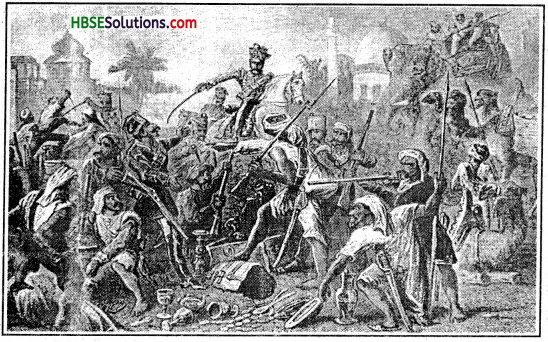
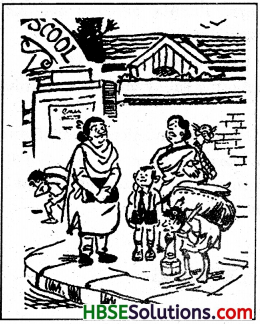

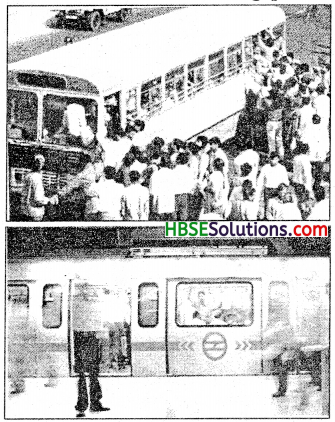


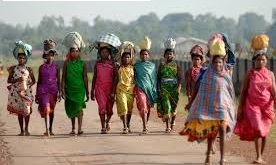
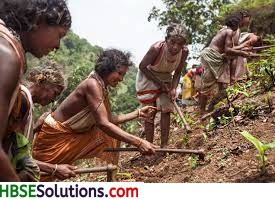

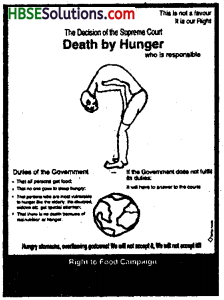
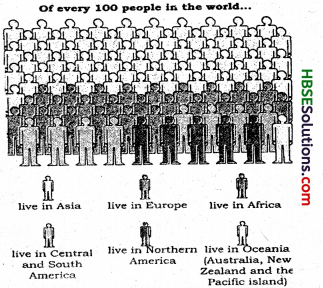

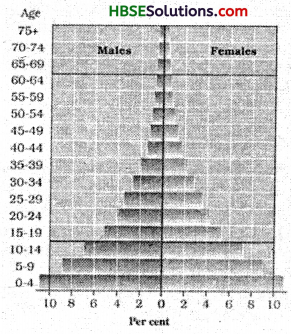
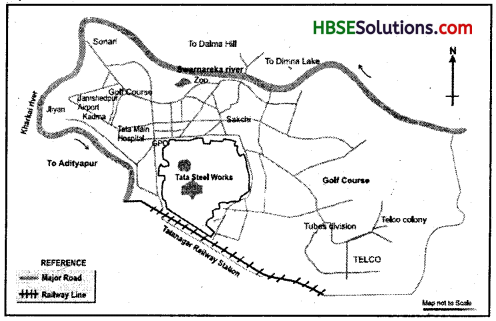
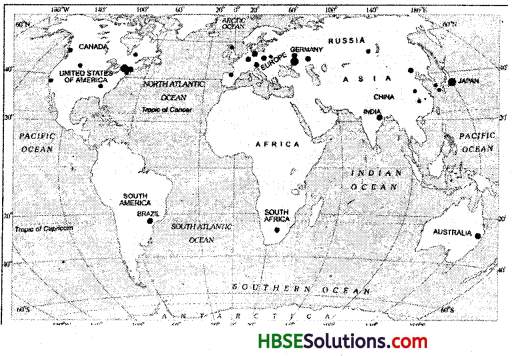
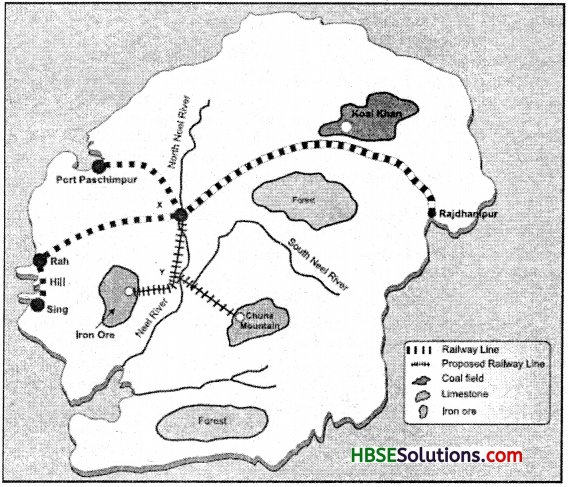

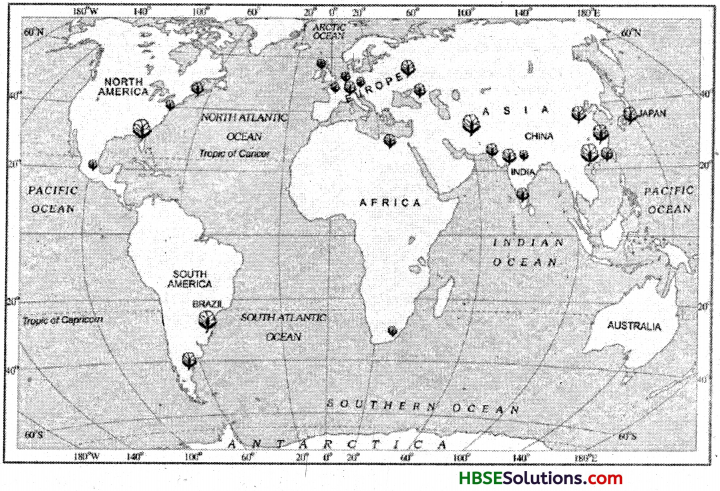 Industries Class 8 HBSE Notes
Industries Class 8 HBSE Notes